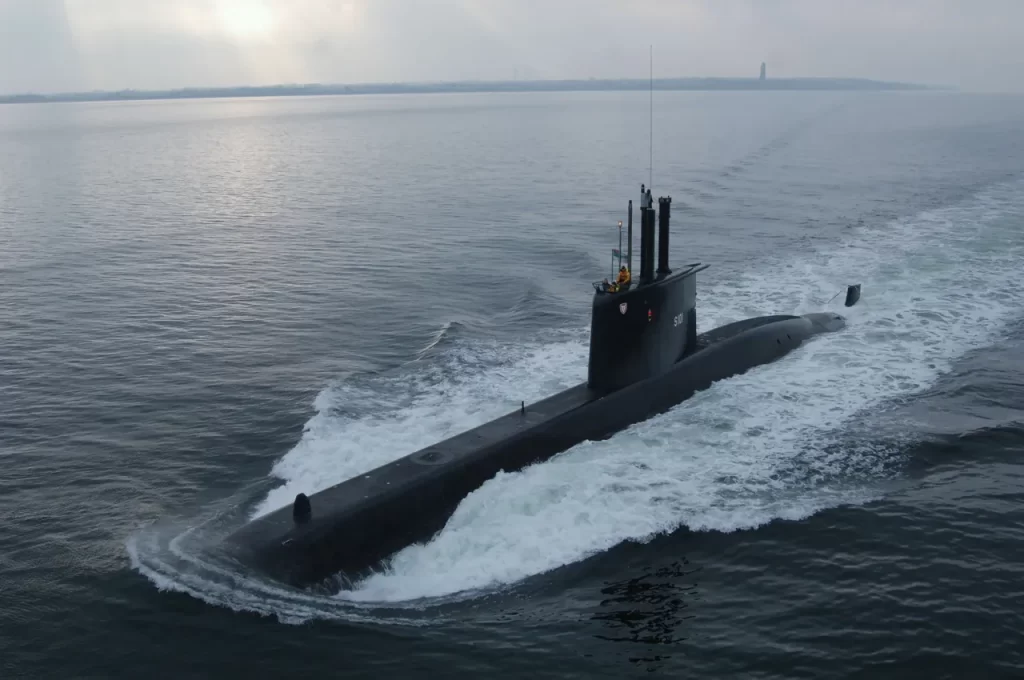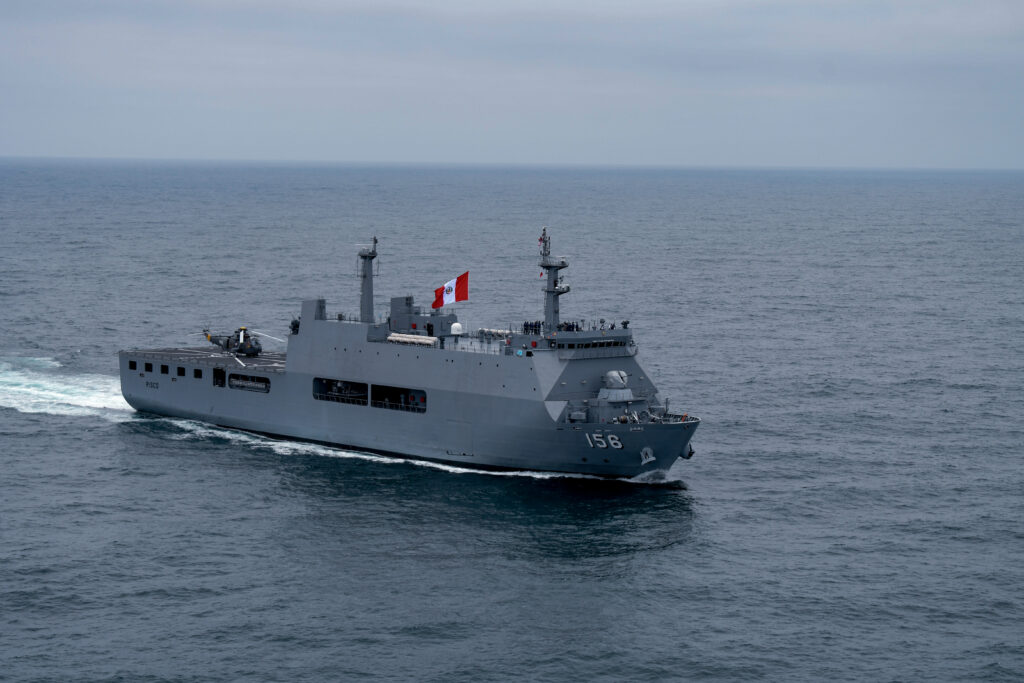With the closure of 2023 driven by the acquisition of P-3C/N Orion reconnaissance planes from Norway, the Argentine Navy enters the current year with the expectation of making progress in various projects, some in execution and others awaiting better conditions.

One of these initiatives aimed at recovering Navy capabilities was the formalization of the agreement with Norway for the acquisition of four P-3C/N Orion maritime patrol and reconnaissance aircraft. Identified with BAPIN (public investment project bank) No. 116667 “Acquisition of 4 P3 Orion long-range exploration aircraft, Trelew, Chubut Province”, the project included the purchase of aircraft, spare parts, maintenance systems, conditioning services, and technical assistance.
However, despite the seemingly smooth progress of the purchase, the arrival of the Norwegian Orions suffered the consequences of the Argentine electoral process and the irresponsibility of those in charge of decision-making: the lack of an initial payment led to a contractual breach, an embarrassing situation for Argentina that could be resolved by the end of 2023, involving mandatory changes in the initial schedule.
The arrival of the first Norwegian Orion, coming from the United States, will have a significant impact on the Argentine Navy, as its incorporation would finally restore the long-range exploration capability of Naval Aviation. The P-3C/N aircraft will be a tool for control and surveillance missions in Argentine maritime spaces.



It is worth noting that the force ceased operating its P-3B Orion aircraft years ago due to structural issues. One of these aircraft has been at the Argentine Aircraft Factory “Brigadier San Martín” (FAdeA) since April 2015, as part of the revitalization project intended to extend the service life of three Orion Bravo aircraft. However, almost nine years later, the 6-P-56 is still awaiting completion of the work. FAdeA indicated that the aircraft could be delivered in the first half of 2024, but it wouldn’t be the first time the schedule is not met… once again.
Modernization and possible acquisitions for Naval Aviation.
Continuing with Naval Aviation, the force maintains several projects aimed at recovering and modernizing its aircraft. This includes the Beechcraft T-34C-1 Turbo Mentor, whose upgrade was awarded to FAdeA with a planned investment of USD 3,301,294 for materials and $168,788,817 in labor.
The interagency agreement included the completion of the COM/NAV modernization development and certification for Naval Aviation’s T-34C-1 Turbo Mentor, which involves updating a development prototype and the serial modernization of three other aircraft.

Another initiative of Naval Aviation focused on the modernization of three Beechcraft Super King Air 200 aircraft. The update, initiated with a tender process in late November 2023, involved work on the instrument panel, avionics equipment, navigation, and communication systems. The contract’s scope included the provision of kits, engineering design, materials, certification, documentation, training, and necessary technical support “…for the complete integration, installation, and functional implementation of the cockpit modernization for the pilot and copilot positions…”.
Although the arrival of the modernized Sea King helicopters brought relief, Naval Aviation continued to explore possibilities to expand its rotary-wing fleet, both through the acquisition of a new batch of SH-3 helicopters and a new light helicopter for operation from the oceanic patrol vessels of the OPV87/OPV90 class incorporated in recent years.

This latter project saw the signing of a letter of intent with the company Leonardo, outlining the framework for the acquisition of eight Leonardo AW109 helicopters. The potential arrival of these new helicopters will allow the Naval Aviation Command to replace the AS-555-SN, increasing the availability of deployable airborne assets and strengthening surveillance, search, and rescue capabilities over the national maritime spaces.
Another initiative aimed at adding capabilities is the project for the development of an Rotary-winged embarked Unmanned Aerial Vehicle (UAV). This is the RUAS-160 system developed jointly by the company INVAP, the helicopter manufacturer Cicaré, and the agricultural services company Marinelli Technology.
The agreement, approved by the Ministry of Defense in December 2021, specified that the contract between the Argentine Navy and INVAP amounted to USD 1,770,000. “…The Rio Negro-based company must deliver to the Navy a pre-series UAV with an engine, a portable control station consisting of two rigidized cases, an electro-optical FHD gimbal, an LWIR IR system, a rangefinder, a medium/long-range communication system (40nm/70km), a robust conventional structure, and a satellite transmission system for online video in medium/low definition. The contract also includes the mandatory airworthiness certification by the DIGAMC (Joint Military Airworthiness Directorate)…”, as previously detailed by Zona Militar.

Last but not least is the recovery of the Super Étendard Modernisé. The process of bringing the aircraft into operational conditions has not been without controversy in recent months, with various rumors that were even denied by the Argentine Navy itself. The truth is that, in recent years, Naval Aviation made various efforts to find solutions for the SUE/SEM, initiatives that faced budgetary and technical limitations.
Submarines, modernization projects, and acquisitions.
One of the most significant projects of the Argentine Navy revolves around the recovery of its Submarine Force. Although the previous administration considered options from German, French, and Brazilian shipyards, an official candidate was not selected.
The proposals submitted by European shipyards were the Type 209 from ThyssenKrupp Marine Systems and the Scorpène from Naval Group. The Ministry of Defense attempted to proceed with the Brazilian option of the French model; however, this initiative would not mature. The Argentine requirement was for three conventional submarines, a purchase that also included the provision of kits for submarine assembly within the country, as well as technology transfer.


In terms of modernization projects, the completion of various works on different naval units of the Navy has been announced many times. However, these have been very limited, mostly initiatives for the fine-tuning and recovery of certain capabilities.
In 2023, then-Commander of the Sea Fleet, Rear Admiral Carlos María Allievi, provided details on some of the long-term modernization projects for the Argentine Navy. These initiatives range from the acquisition of ships to replace Type 42 class destroyers, to the modernization of MEKO 360 destroyers and MEKO 140 corvettes.
Considering local requirements and leveraging its experience with MEKO ships, the Turkish company Aselsan would develop a proposal presented to the Argentine Navy for evaluation. Various sources confirmed to Zona Militar that the offer would include some aspects addressed in the update of the MEKO 200TN / Barbaros frigates operated by the Turkish Navy.

The modernization project advances due to Aselsan’s interest, an initiative that emerged as part of a series of offers made by the Turkish defense industry to the Argentine Armed Forces. Updates on this project can be expected in the medium term.
Related to the modernization of MEKO destroyers and corvettes, it is necessary to recall that in March 2023, the Navy and INVAP agreed to build a naval surveillance radar based on active electronically scanned vertical (AESA) technology, “…to increase and improve the operational capability of the MEKO class surface units…”. The pre-series radar development involved an investment of USD 14,345,000.
Another program to recover capabilities was mentioned by the former Commander of Training and Readiness of the Argentine Navy, Vice Admiral Jorge Juan Siekan. During the press conference, the Vice Admiral confirmed that among the most important projects for the Navy in the short term was the “…acquisition of the LST pair, which is a Landing Ship Tank, and an LSD, which is a slightly larger landing ship. We will present that project, and it will depend on the prioritization by the Defense Fund (FONDEF) to allocate resources to these units…”.


The options evaluated by the Argentine Navy included the Makassar-class LSD designed by Daesun Shipbuilding & Engineering and the Damen 100 class LST.
Local construction.
Among the projects awaiting approval is the construction of a new Polar Logistic Ship for the Argentine Navy in local shipyards. This ship’s mission is to complement the efforts made annually by the icebreaker ARA Almirante Irízar during the Summer Antarctic Campaigns (CAV).
Like many programs, the planned investment of USD 195 million for the future polar ship was included in the 2024 Budget. With TANDANOR having worked on the engineering stage with the Finnish company AKER, 2023 ended without major developments regarding the project.
One of the projects that gained traction in 2023 was the construction and testing of the Navy Cadet Instruction Boats (LICA). In late December, the ARA “Ciudad de Berisso” conducted the first sea trials to adjust and verify the proper functioning of all systems installed in a real operating environment.


A similar process had previously been carried out by the ARA “Ciudad de Ensenada” in September, a ship that advanced to one of the final stages before its formal delivery to the Argentine Navy. It is worth noting that the construction of the LICA began in 2016, a process that lasted for more than seven years and has not yet concluded.
Another local initiative is the construction of twelve tugboats, handled by TANDANOR. Of the total planned units, seven belong to the 40 TBP series, while the remaining five are of the 10 TBP series, weighing 40 and 10 tons, respectively. The construction of the first unit was announced in September 202.
Another incomplete project, despite its launch, is the completion of the works on the hydrographic ship ARA Petrel. Launched in November 2022, the unit has not yet been delivered to the Argentine Navy.
In a subsequent installment, we will address projects related to the Marine Corps.
You may also like: These are some of the most relevant projects of the Argentine Air Force for 2024









